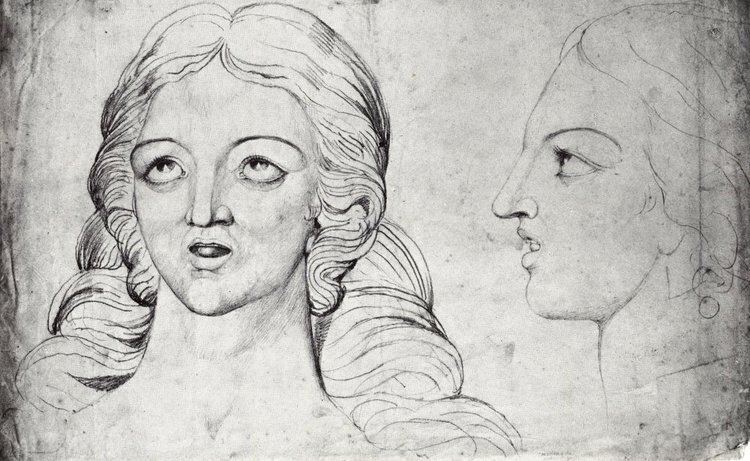Role Poet Name Corinna Corinna | ||
 | ||
Ray peterson corinna corinna 1960
Corinna (Ancient Greek: Κόριννα Korinna, usually Corinna in English texts but also found as Korinna,) was an ancient Greek lyric poet from Tanagra in Boeotia, who has been called the most famous ancient Greek woman poet after Sappho. Although ancient testimonia say that she was a contemporary of Pindar, modern scholars are divided on the accuracy of this tradition, and some claim that she is more likely to be from the Hellenistic period. Her works, which survive only in fragments, focus on local Boeotian legends. Though her poetry is of interest as one of the few preserved female poets from ancient Greece, it is generally regarded poorly by modern critics.
Contents
Corinna poetry samples
Life
Corinna was from Tanagra in Boeotia, the daughter – according to the Suda – of Acheloodorus and Procratia. According to ancient tradition, she lived during the 5th century BC, and because she long resided in Thebes, she was sometimes called a Theban. She was supposed to have been a contemporary of Pindar, either having taught him, or been a fellow-pupil of Myrtis of Anthedon with Pindar. Corinna was said to have competed with Pindar, defeating him in at least one competition, though some sources claim five.
However, from the early twentieth century, scholars have been divided over the accuracy of the traditional chronology of Corinna's life. As early as 1930, Edgar Lobel argued that the language used in Corinna's surviving poetry seems to favour a later date than tradition suggests, and that there is no reason to believe that Corinna significantly predated the mid-fourth century BC, the point at which the orthography preserved in the Berlin Papyrus of Corinna's poetry began to be used. More recently, M. L. West has argued for dating Corinna to the late-third century BC, and W. J. Henderson supports a middle-ground, between West's very late and the traditional early date. David A. Campbell judges it "almost certain" that her poetry belongs to the 3rd century BC. Other scholars such as Archibald Allen and Jiri Frel argue for the accuracy of the traditional date, writing that a Hellenistic Corinna as argued for by West would be "astonishing".
Poetry
Corinna, like Pindar, wrote choral lyric poetry – as demonstrated by her invocation of Terpsichore, the Muse of dance and chorus, in one of her fragments. According to the Suda, she wrote five books of poetry. Derek Collins writes that "the most distinctive feature of Corinna's poetry is her mythological innovation", and one ancient story says that Corinna considered that myth was the proper subject for poetry, rebuking Pindar for not paying sufficient attention to it. According to this story, Pindar responded to this criticism by packing his next ode full of myths, leading Corinna to advise him, "Sow with the hand, not with the sack." Corinna's poetry concentrates on local legends, with poems about Orion, Oedipus, and the Seven Against Thebes. Her Orestes is possibly an exception to her focus on Boeotian legends.
Some scholars state that Corinna wrote in the Boeotian dialect, possibly to convey her local pride and patriotism; but others see her as using essentially the language of Greek Epic given a Boeotian coloring by occasional Boeotian vernacular characteristics and overall Boeotian spelling. Some Greek sources, however, describe her dialect as Aeolic with a strong Boeotian influence.
42 fragments of Corinna's poetry survive, though no complete poems of hers are known. The three most substantial fragments are preserved on pieces of papyrus discovered in Hermopolis and Oxyrhynchus in Egypt, dating to the second century AD; many of the shorter fragments survive in citations by grammarians interested in Corinna's Boeotian dialect. Her poetic diction is clear, simple, and generally undecorated.
Two of Corinna's most substantial fragments, the "Daughters of Asopus" and "Terpsichore" poems, demonstrate a strong interest in genealogy. This genealogical focus is reminiscent of the works of Hesiod, especially the Catalogue of Women, though other lost genealogical poetry is known from the archaic period – for instance by Asius of Samos and Eumelus of Corinth. The third major surviving fragment of Corinna's poetry, on the contest between Mount Cithaeron and Mount Helicon seems also to have been influenced by Hesiod, who also wrote an account of this myth.
Marylin Skinner argues that Corinna's poetry is part of the tradition of "women's poetry" in ancient Greece, though it differs significantly from Sappho's conception of that genre. She suggests that Corinna's songs were composed for performance by a chorus of young girls in religious festivals, and were related to the ancient genre of partheneia. Skinner considers that although it was written by a woman, Corinna's poetry tells stories from a patriarchal point of view, describing women's lives from a masculine perspective.
Reception
Corinna seems to have been well-regarded by the people of ancient Tanagra, her hometown. Pausanias reports that there was a monument to her in the streets of the town – probably a statue – and a painting of her in the gymnasium. In the early Roman Empire, Corinna's poetry was popular: the earliest mention of Corinna is by the first century BC poet Antipater of Thessalonica, who includes her in his selection of nine "mortal muses". However, modern critics have tended to dismiss it, considering it naive and shallow. Though her poetry is not well-regarded by critics, Corinna's work has been of interest to feminist literary historians, as one of the few extant examples of ancient Greek women's poetry.
